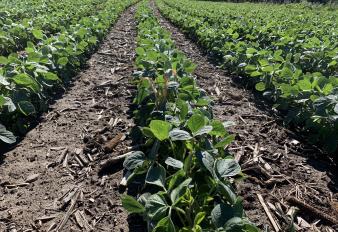SCOUT SOYBEANS AGAIN, AND AGAIN
Jun 26, 2021

Federated Agronomists consistently and persistently encourage growers to scout their fields. “As we finish scouting for weeds, the pre-emerge herbicides held somewhat ok through the lack of rain,” said Kevin Carlson, Federated’s agronomy sales manager. The “little bit of weed escapes” were “not too bad,” but, “continue to watch for weeds” – and persist with post-emerge herbicide applications as needed.
With the longest day of the year one week past, the length of nights will get shorter, and soybeans will flower. It’s time to “finish up soybean weed control,” said Carlson. The end of labeled use arrives for many herbicides when the beans surpass R1 and R2.
“We need to keep scouting soybeans for insects and disease,” said Carlson. “In general, these warmer and dryer years tend to produce more insects,” he said. Watch for aphids, spider mites, and potato leaf hopper, in particular.
“The need to monitor soybeans isn’t going away . . . as we approach flowering, keeping an eye on soybeans becomes [even more] important,” he said. Think about scouting for white mold suppression, too – ask yourself, as you walk the fields, “Are we in the right environment [for disease to develop]?” (See related article.)
Talk to your Federated Agronomists about what you find in your soybean fields. They can offer recommendations to protect and improve yields.